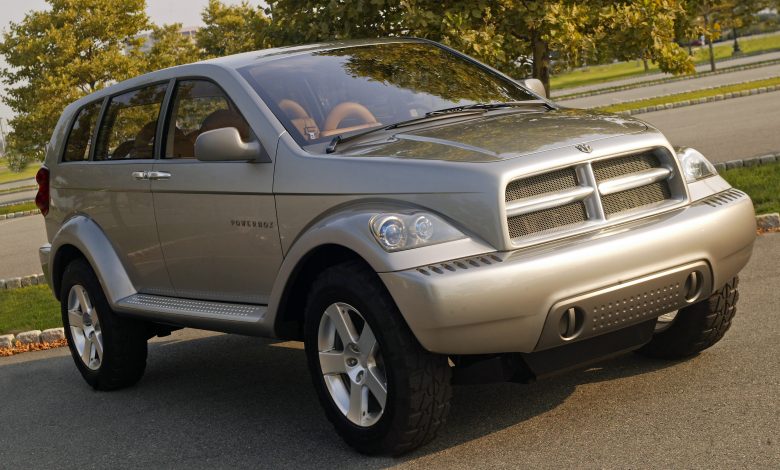
One of the more interesting concepts that the Dodge brand showcased in the early-2000s had to be the Dodge PowerBox Concept. Although the SUV and crossover segments are huge today, at the time it was vastly gaining momentum.
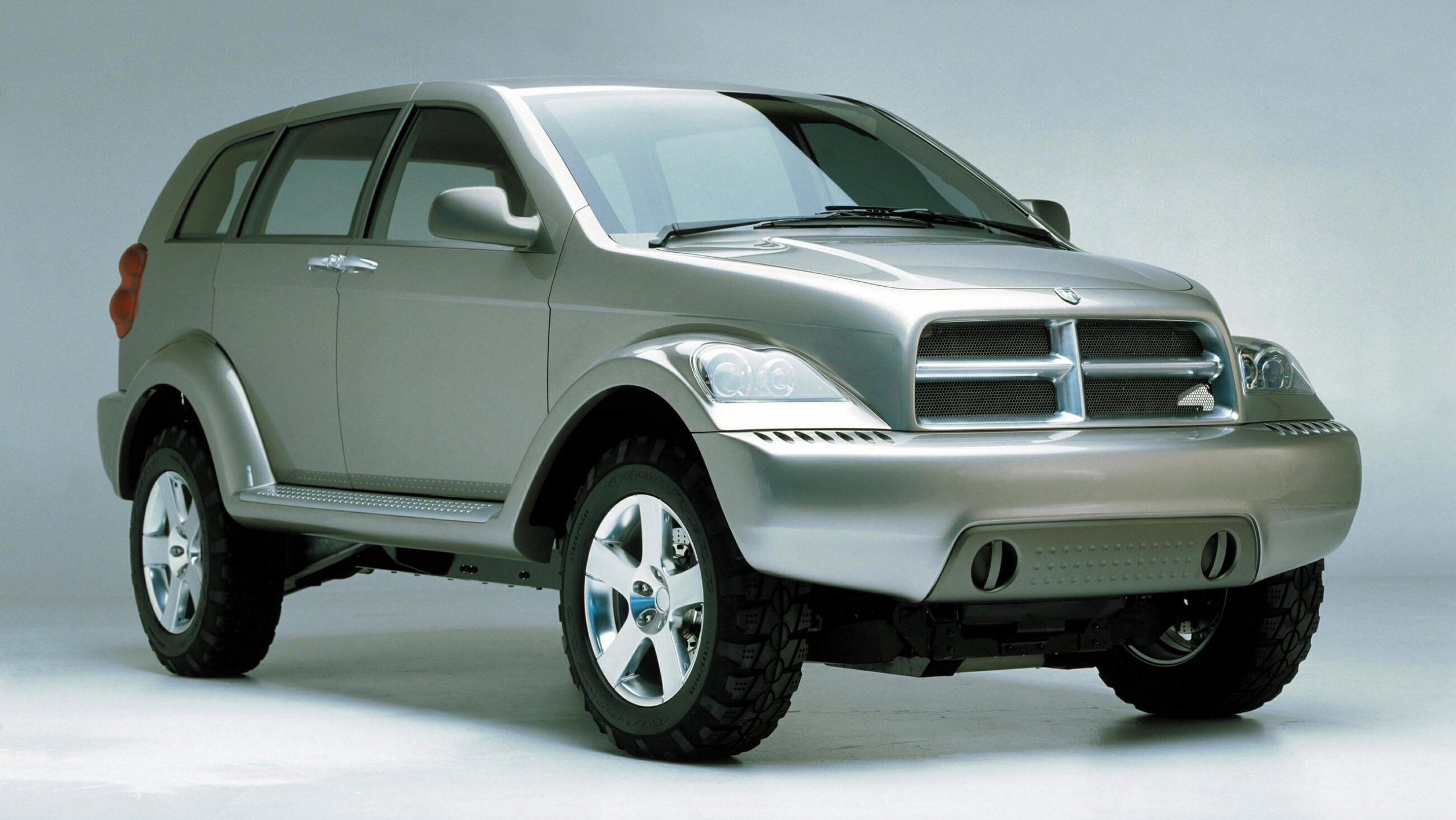
With the success of the brand’s larger than midsize Dodge Durango, Dodge looked towards an even larger SUV. It’s answer was the PowerBox Concept, a large SUV that showcased future technology surrounded by an edgy design that hinted at the future Gen2 Dodge Durango.
Revealed at the 2001 Los Angeles Auto Show, the PowerBox Concept provided the performance of a V8 engine, but with 60% better fuel efficiency than most SUVs of that time period. This was in part by a hybrid powertrain system that drew power from two different sources: Compressed Natural Gas (CNG) and electricity.
With near zero-emissions, the PowerBox featured a supercharged 2.7-liter V6 engine mated to an automatic transmission driving the rear wheels. The supercharged V6 could run on clean CNG and made around 250 horsepower (187 kW). Powering the front wheels, was a 70 horsepower (52 kW) electric motor (e-motor) from Siemens Automotive.
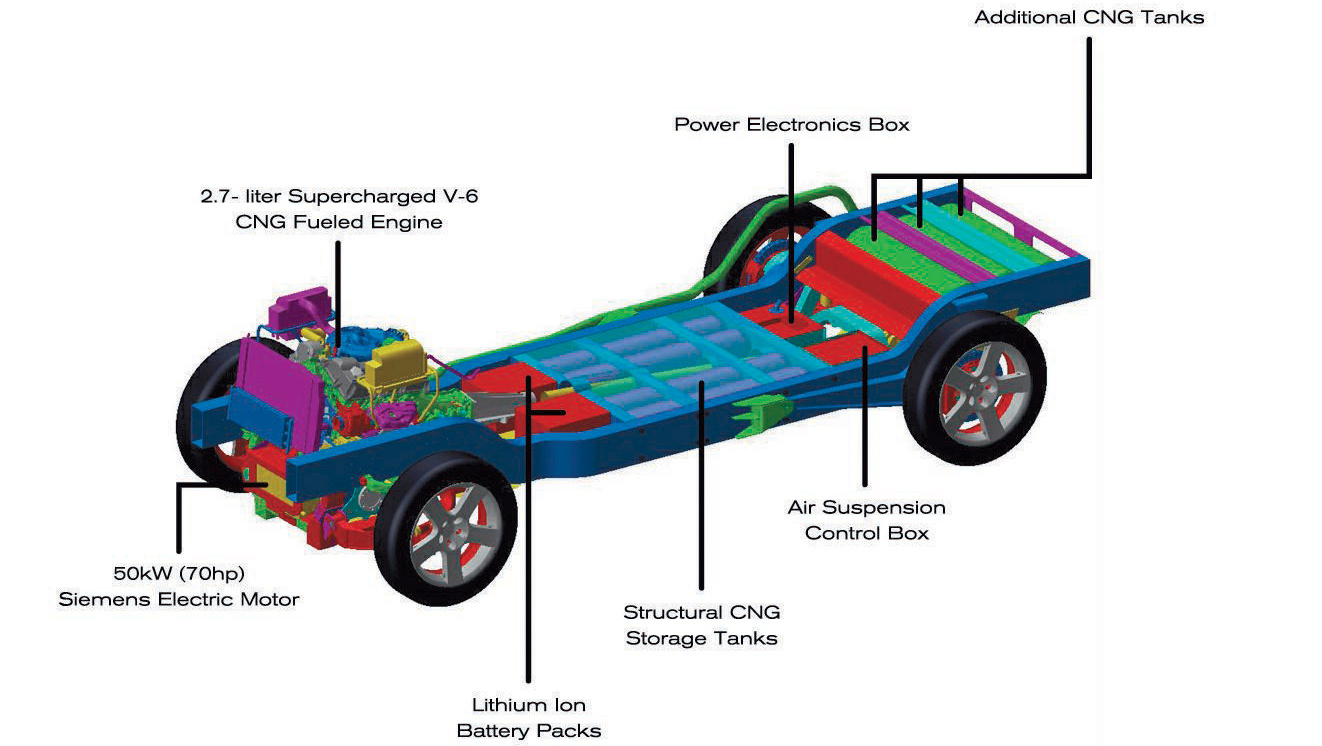
The e-motor was designed to assist the CNG supercharged engine during acceleration and would recapture energy and put it back into a battery-pack normally lost during deceleration. The e-motor and the internal combustion engine (ICE) were not coupled in anyway, connecting only “through the road” hence the name on the patented technology.
Compared with a 2001 Dodge Durango, the PowerBox was projected to achieve 25 mpg (9 L/100 km) resulting in a 60% increase in fuel economy without sacrificing horsepower. From a stop, the PowerBox Concept could achieve a 0 to 60 mph (97 km/h) time in about 7-seconds.
Another technological highlight of the PowerBox was its body construction. Following in the footsteps of the Dodge Intrepid ESX3, it was made of a lightweight recyclable thermoplastic.
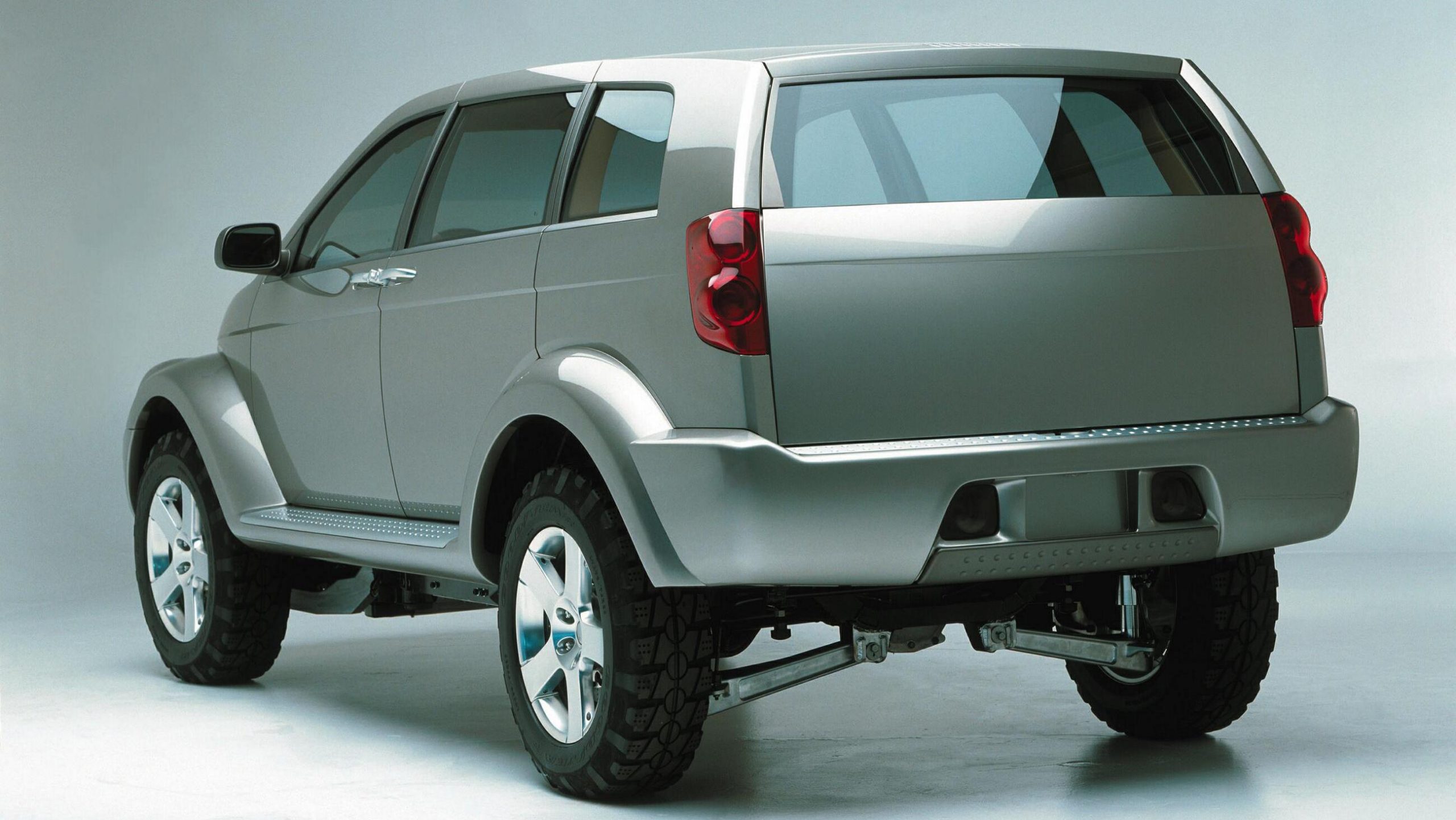
As a super ultra low-emission vehicle (SULEV), the PowerBox Concept had a range of more than 350 miles (563 km), triple the mileage of most CNG vehicles at the time, even rivaling most conventional sedans.
Designed by Mark Allen, Head of Jeep® Design (who at time was a Senior Designer for the Jeep / Dodge Trucks), wanted to evolve the muscular “all-Dodge” design he had originally created on the widely popular 1999 Dodge Power Wagon Concept into a package for an SUV.
“The exterior design elements express the strength of the brand”, said Allen. “It is instantly recognizable as a Dodge. From its large, separate drop fenders based on the classic 1946 Power Wagon, to the crosshair grille, this truck is bold, powerful and capable. We refer to it as the Dodge DNA”.
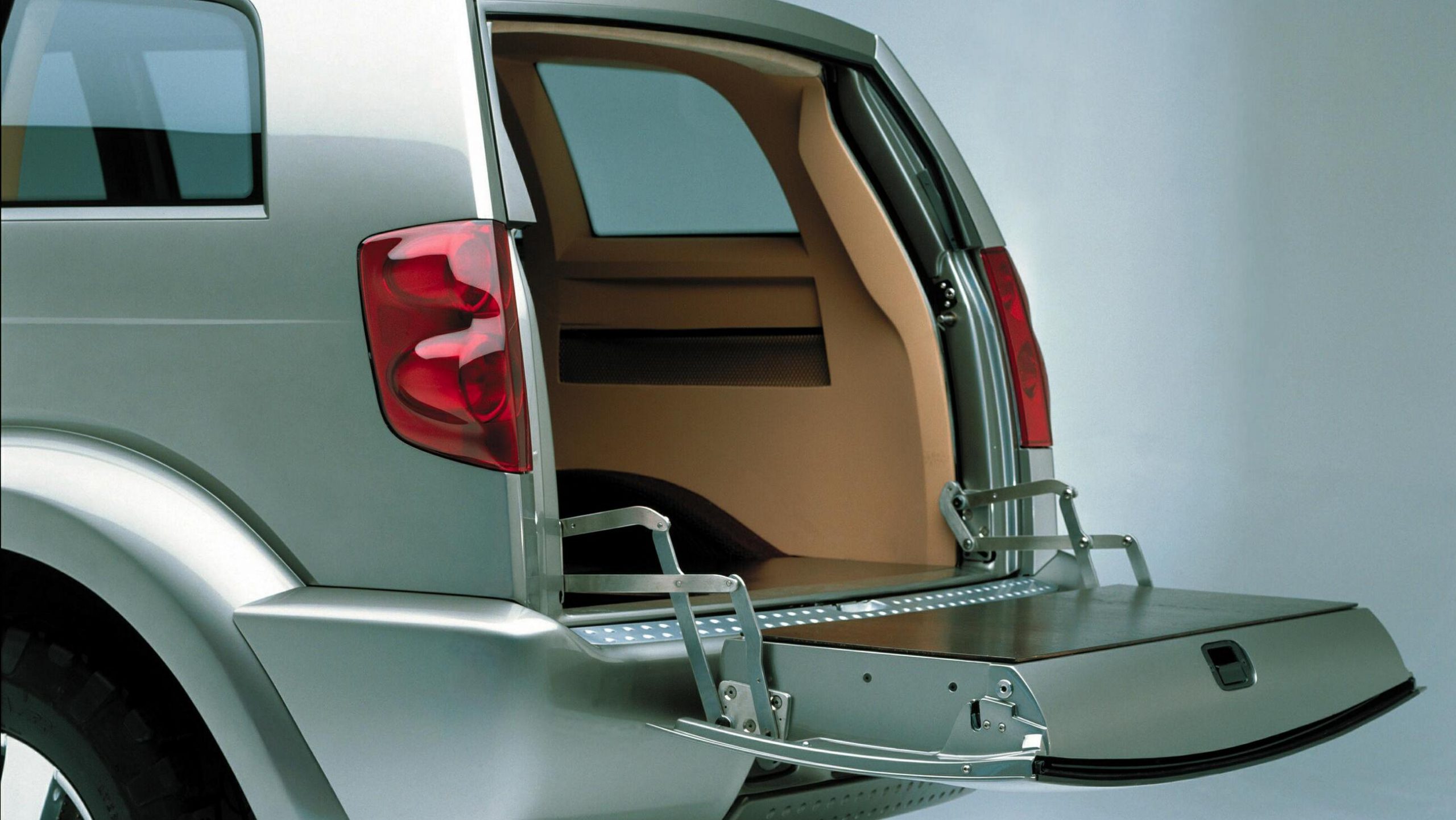
Joel Baccus, who was the PowerBox’s Senior Interior Designer, created an interior that reflected the bold design of the vehicle’s exterior while providing a natural and inviting atmosphere. Inspired by a desert photograph, the PowerBox Concept used an interior color palette of an outdoor-like environment and utilizing the natural colors of a red rock canyon.
We set out to design a warm, domestic interior space that would balance the power and ruggedness of the exterior design,” he said. “Something that would feel more like home furnishings.”
Featuring a straightforward instrument panel design spans from door to door the interior created a sense of simplicity. High seating positions offered the driver command of the road while PowerBox’s “kneel-down suspension” provides ease of entry and exit for both driver and passengers. The vehicle could drop 3-inches after being placed in “Park”.

The PowerBox Concept also featured occupant restraint belts integrated into the seats providing a totally open and clutter-free zone. A pair of swing-slide rear doors maximized passenger accessibility and provided easy access to the rear storage area, thanks to the B-pillar being integrated into the swing-slide door. The door was latched at the top and bottom providing the same strength as a traditional middle latch.
Another innovative feature on PowerBox was the “lift-tail-combo gate.” The patented configuration made loading and unloading even easier. Using a tailgate within a liftgate design, one could choose to lift the tailgate up or drop the tailgate down for extended cargo length.
The PowerBox Concept featured seating for 8-passengers that provided 24% more interior space than a 2001 Dodge Durango. Additionally, backseats could fold down flush with rear cargo floor for increased space and cargo hauling capability. With rear seats folded flat, the overall cargo length was 7-feet (1-foot more than the Durango). While extremely roomy inside, the PowerBox Concept had a width of 77-inches, a wheelbase of 125-inches, and an overall length of only 1-inch greater than the Gen1 Durango.

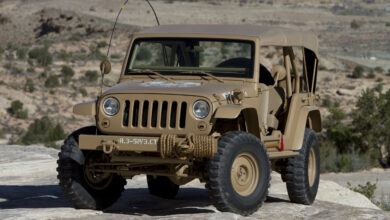
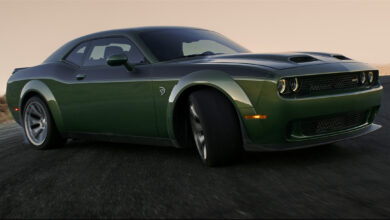
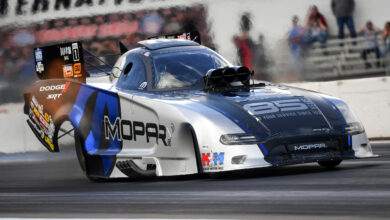
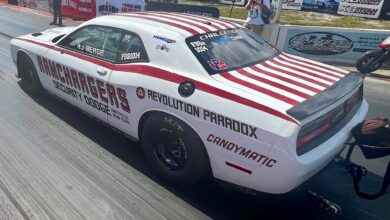
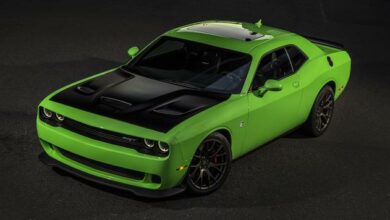
1 reply
Loading new replies...
Join the full discussion at the Mopar Insiders Forum →